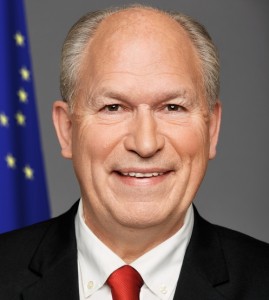 Like many Alaskans, I remember the excitement in the air when Alaska became the 49th state in the Union in 1959. We had achieved our long-held dream of self-governance. Since that time, we have worked to become increasingly self-reliant, and to steward our resources for the long-term benefit of our people.
Like many Alaskans, I remember the excitement in the air when Alaska became the 49th state in the Union in 1959. We had achieved our long-held dream of self-governance. Since that time, we have worked to become increasingly self-reliant, and to steward our resources for the long-term benefit of our people.
The Alaska Statehood Compact established the conditions for our entry. Through the Compact, Alaska was granted 103 million acres of public land – less than one-third of our state’s landmass. The federal government reserved most of the remaining lands.
Implicit in the Compact is a directive to the state to develop its resources. The Compact prohibits Alaska from selling our subsurface mineral rights – development rights can be leased, but ownership must stay with the state.
The message from Washington, D.C. to the new state was clear: we were to develop our mineral resources to establish a viable economy and support the costs of self-government.
Alaska has fulfilled our part of the Compact. We have responsibly developed our resources — including our fisheries, often held up as the best-managed in the world. We have used our resource income to build roads and schools, and to provide basic services that Americans elsewhere take for granted – such as running water and electricity.
Knowing that resource revenue is volatile, we wisely built up our savings. And we have built the 49th state into a thriving region.
In fact, according to the nonpartisan Pew Charitable Trusts, Alaska is now less dependent on federal aid than a majority of states: federal funds make up about 20 percent of our state’s revenue, compared to more than 30 percent of the average state’s revenue. We have proven that if the federal government allows us reasonable access to our resources, we can and will be as self-sufficient as any other state.
The federal government chipped away at this access with passage of the Alaska National Interest Lands Conservation Act (ANILCA) in 1980. ANILCA designated more than 100 million acres of federal land as conservation areas. What brought some comfort to Alaskans was a clause in ANILCA providing that there would be no more conservation designations without an act of Congress.
Last week President Obama violated the letter and spirit of both the Statehood Compact and ANILCA’s “no more” clause by designating further wilderness within the Alaska National Wildlife Refuge (ANWR). While this will ultimately require an act of Congress to finalize, until Congress acts, federal agencies will manage this land as de facto wilderness.
For 30 years Alaska’s oil has fueled America’s economic development and helped reduce our nation’s dependence on foreign oil. As America looks toward renewable energy, Alaska is also working to develop our alternative energy sources, such as wind and geothermal. But America still needs oil, and Alaska is still the best place to get it.
We have fulfilled our promise to develop our resources to provide for our own needs. We expect the federal government to uphold its promise not to further hamper our economic viability. Enough is enough.
Gov. Bill Walker (Independent) is the 11th governor of the State of Alaska.
